Oct 24, 2024
What is Cold Email Deliverability & Its Importance
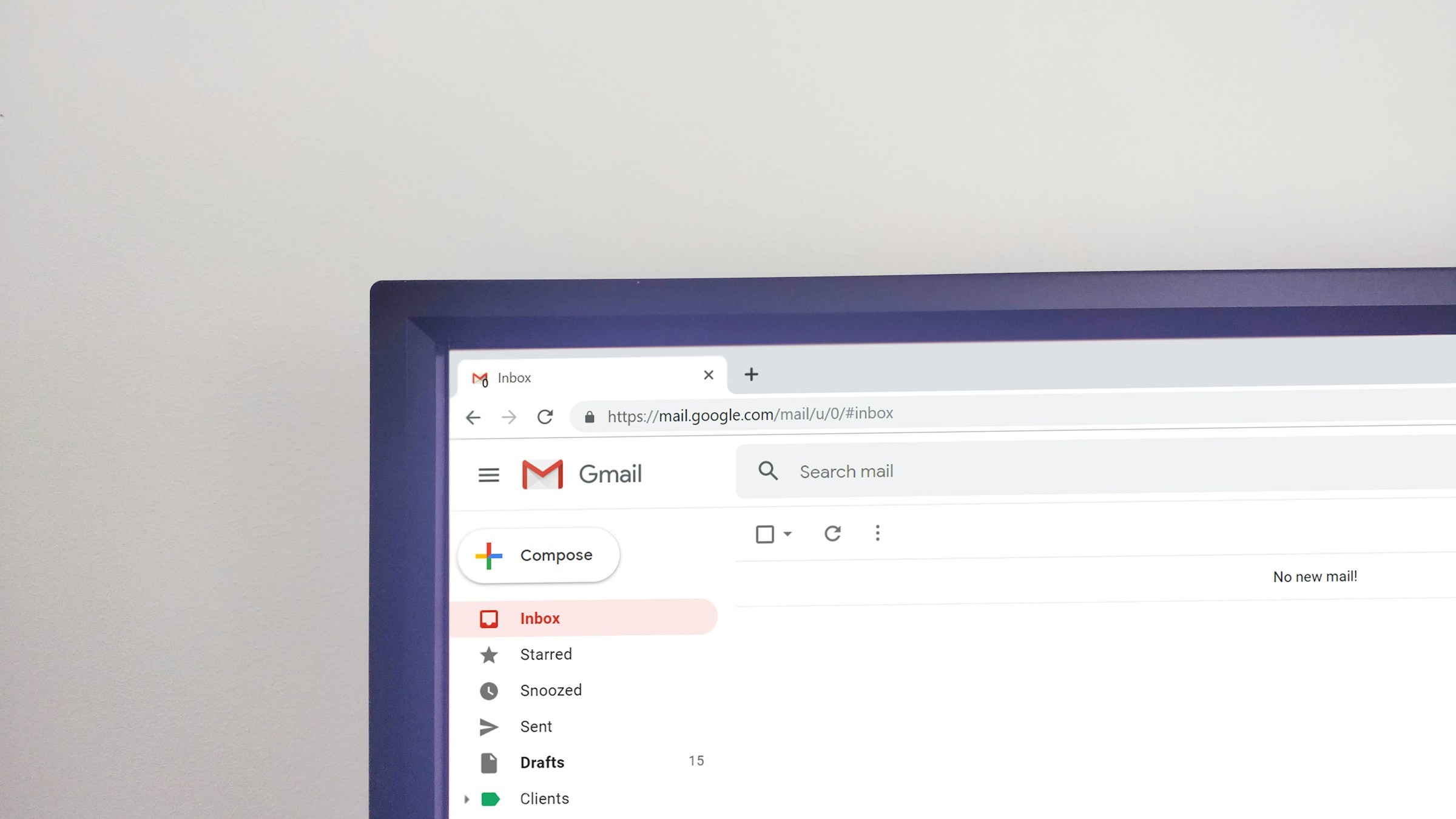
Email deliverability, or cold email deliverability, refers to the success of an email in reaching its intended recipient’s inbox without being blocked or flagged as spam by the ESP. After an email is sent, it passes through the ESP’s spam filters, which have several checking stages before reaching the recipient. If you pass the spam filter standards, your emails will appear in their inboxes. But if you fail, your email might get marked as spam and land in a spam folder or not be delivered to your prospects.
Email Delivery
Email delivery successfully transfers an email from the sender’s server to the recipient’s server, ensuring the email arrives at the recipient’s mail system.
Email Deliverability
Email deliverability refers to the likelihood of an email successfully reaching the recipient’s inbox rather than being filtered out as spam or landing in the junk folder.
Why Is Email Deliverability Important?
Email deliverability plays a significant role in a successful outreach campaign. The goal is to send an email to many recipients and ensure the email is delivered to the inbox successfully. So, you have prolonged cold email deliverability issues and need to pay attention to them. In that case, it may have an irreversible impact on your ability to send cold emails if not addressed on time.
The Hidden Dangers of Poor Cold Email Deliverability
A poor email deliverability could:
Damage Sender Reputation
You can damage your sender’s reputation if your emails are often marked as spam or bounce. As a result, future email campaigns may not be more successful.
Blacklisting
ESPs may blacklist your domain or IP address if your emails continuously land in the spam. As a result, you may need help getting your emails delivered with the same domain.
A good email deliverability could:
Improved Email Reputation
You can achieve a positive sender reputation if you consistently reach and engage with your target audience’s inbox.
Increased Daily Sending Limits
Your ESP may increase your daily sending limit if you consistently send good emails. It can improve the reach and performance of your email campaigns.
Increased Audience Engagement
By reaching more inboxes, you enhance the likelihood of your emails being opened and clicked. This results in greater engagement and a more substantial return on investment (ROI).
What Affects Cold Email Deliverability?
An email’s deliverability can be affected by many factors. All of them can be managed. So, you must learn about them and keep an eye on them.
Low Sender Reputation
ESPs determine whether to deliver your emails based on email-sending behavior or reputation. A low sender score or history of spam can ruin your chances of landing in the prospect’s inbox.
Here are the numbers as per best email deliverability practices guidelines.
90-100: Excellent reputation. Emails are highly likely to reach the inbox.
80-89: Good reputation, but there may be occasional issues or areas for improvement.
70-79: Fair reputation, with a higher risk of emails being filtered into spam folders.
60-69: Poor reputation, with a significant risk of deliverability issues.
Below 60: Critical issues with deliverability, likely to face frequent filtering or blocking.
Anything above 80 on a scale 100 is considered a good sender reputation score.
IP Reputation
How trustworthy your IP address is will determine whether your email shows up or goes to the dump yard. Its service provider’s historical behavior decides the reputation of an IP. If your IP has a crooked history with many complaints, you may have trouble getting emails into the inbox using that IP.
Email Authentication
Email authentication lets ESPs verify the sender’s identity to prevent spam. Authentication is mainly performed using:
SPF
DKIM
DMARC
Newer terms are used to perform in-depth authentication, such as:
ARC
BIMI
TLS
Poor Email Content
Content is central, and many things can go wrong for ESPs and with an email’s content. That’s why we will discuss them separately to give you clarity.
Spam Triggers
There are some words that the public and ESPs associate with being spammy. If your content has those words, your content will take you down. A few examples of spammy words include:
Free
Unleash
Ultimate
Win
Discount
Limited Time
Urgent
Order now
Gift, Bonus
Act Now
Deal
Buy Now
Image-To-Text Ratio
Images are not much appreciated in cold emailing. If you must add an image, a 60-40 ratio is considered an ideal image-to-text ratio. Adding GIFs in follow-ups is highly recommended. Maintaining this ratio will ensure the easy readability of your content for users and easy filtering from ESPs.
Big Videos
Attaching videos directly in the emails is highly unadvised. You should keep the size of your email under 100 MegaBytes. But if you must share a video, you can attach a static image or GIF and link it to:
The original video saves space
Improves deliverability
Achieves the purpose
High Bounce Rate
Bounce rate is a significant term to know when improving email deliverability. We will discuss it in more depth in the next session.
Type of Bounce Rate
So, there are two types of bounce rates:
Soft Bounce: A temporary delivery failure. Reasons like the recipient’s full inbox, server issues, message size, and other temporary network issues can cause a soft bounce.
Hard Bounce: A permanent delivery failure. Reasons like blocked emails, invalid email addresses, and the inexistence of server or domain addresses can cause hard bounce.
Why Does Your Email Get Bounced?
Your cold emails get bounced for the following reasons:
Invalid Email Addresses
Full Mailbox
Spam Filters
Server Issues
Email Size
Configuration Errors
Content Issues
Temporary Failures
Policy Restrictions
If the bounce rate is high (between 2% and 5%), you will suffer from a lousy sender’s reputation and low email deliverability. A bounce rate below 2% is considered good, while anything above 2% requires immediate action to reduce it.
High Complaint Rate
This is very important to notice: your complaint rate should be at most 0.1%.
In cold emailing, a high complaint rate typically refers to the percentage of recipients marking your emails as spam or reporting them to their email provider. An acceptable complaint rate is generally below 0.1% (1 complaint per 1,000 emails sent).
Here’s a more detailed breakdown:
Ideal: Below 0.1%
Concerning: 0.1% – 0.3%
High: Above 0.3% ESPs prioritize monitoring this factor to protect recipients from users who send emails that generate complaints.
Low Engagement Rate
Engagement rate in email deliverability is a combination of:
Open rates
Click-through rates
Click-to-open rates
You must ensure this rate stays within 10% to 15%. Note that this metric matters more to people who send bulk emails daily, as people who send limited cold emails every day won’t face significant difficulties in deliverability due to this metric.
Irregular Sending Pattern
ESPs notice if you send emails left, right, and center. They don’t like the users who spam recipients with a truck of emails. Not scheduling correctly and, therefore, missing out on prime time when your recipient might check your cold email indirectly harms you. But if you have nothing fixed about how I send emails, it will hurt your email deliverability. In short, keep an eye on the volume and frequency of your emails.

Related Reading
• Automated Lead Generation
• Email Prospecting
• How to Generate B2B Leads
• How to Warm Up Email Domain
• How Many Emails Can You Send Before Considered Spam
• Best Time to Send Cold Emails
• How to Cold Email
• Best Cold Email Templates B2B
• Email Outreach Best Practices
• Email Outreach Strategy
How to Improve Your Mass Cold Email Deliverability

Setup Authentication: Cover Your Bases with Email Authentication
The best way to guarantee your cold emails reach the right inbox is to authenticate your emails. Email authentication helps the recipient’s server verify that your emails are actually from you and not a spammer or impostor.
There are three main types of email authentication you should set up before sending cold emails:
DKIM
SPF
DMARC
Here’s how they work:
DKIM
DKIM (DomainKeys Identified Mail) allows the ESP of an email recipient to verify that the domain owner indeed sent it. To add DKIM, you need to log into your DNS settings and follow the instructions:
Create a Text “TXT” or “CNAME” record per your hosting provider standards.
Paste the value or setting for DKIM (from your hosting provider).
Set your host, like in the example, s1._domainkey, where s1 is the DKIM selector.
Click the Save button.
You can check whether your DKIM is published here.
SPF
SPF (Sender Policy Framework) is an email validation system that detects email spoofing. It allows the domain owner to specify which IP addresses are authorized to send emails on behalf of that domain. To add SPF, log in to your DNS settings from your hosting provider or domain registrar, such as:
GoDaddy
Zoho
Here are the following steps:
Create a new record with the type “TXT.”
Name: A record’s name is its hostname or prefix without the domain name. You can enter @ or a prefix, such as mail, to place the record on your root domain.
Value: The SPF rule to be applied, such as v=spf1 mx -all (it can be different for different providers), indicates emails are only allowed from your mail server.
TTL: Keep TTL at default settings.
Save the record
DMARC
DMARC (Domain-based Message Authentication, Reporting, and Conformance) is a policy that combines SPF and DKIM to determine the authenticity of an email message. You can set these records in your DNS settings. You can add a DNS TXT record or modify an existing one by entering it in the TXT record for _dmarc:
In the first field of the TXT record, enter _dmarc.yourdomain.com. In the second field, enter the text for your DMARC record. Depending on your DNS provider, the field names for DNS TXT records may vary for different providers.
Example: v=DMARC1; p=none;rua=mailto:dmarc-reports@example.com Make sure you save your changes.
Email Infrastructure: The Technical Stuff Behind Your Email Deliverability
Email infrastructure is just software and hardware components that ensure your email is delivered correctly to your recipient’s inbox without getting lost in spam or blocked. If your email infrastructure is set up correctly, it will ensure email deliverability from start to finish.
Set Up Secondary Domains: Protect Your Main Domain
Creating a secondary domain to prevent your primary domain from being burned is helpful. This method allows you to continue sending emails with different domains even if your primary domain suffers reputation issues. So, you can save the domain reputation for your original business name while distributing your sending strategy with secondary domains.
You should send less than 50 emails from each email account from a domain per day. You can also use a cluster of secondary domains to send your emails for high deliverability.
Set Up Custom Tracking: Use Your Own Domain
Custom tracking domains ensure you send links or images (if any) through your domain instead of a shared one to ensure good deliverability. Add a CNAME record in your DNS settings with the value your email host gives.
For Saleshandy, use watch.saleshandy.com and host field trk (or any other name you prefer) to create a custom domain. Afterward, you can verify your custom domain records from Whatsmydns.
Warm Up Your Domains: Don’t Skip This Step
Before sending many emails, you need to warm up your domain. Then, gradually increase the volume over a few weeks by sending small segments of your list small quantities of emails. As a result, you will maintain a positive relationship with the ESPs. Manual warm-up is a highly tedious task. Nevertheless, you can use automated warm-up tools to engage with your inbox humanly.
Clean Your Email List: Remove Bad Contacts
Remember what we understood about hard bounces? Yes, your deliverability will be negatively impacted when a hard bounce occurs due to an invalid email address. Don’t wait for a hard bounce; how you clean your home regularly, Keep your email list clean, and remove invalid addresses will reduce hard bounces.
Choosing reliable sources is the best way to build a healthy email list. Building an effective lead list ultimately helps reduce the bounce rate.
Segment Your Email List: Improve Targeting
Keeping your list clean can’t be avoided, as this step will determine the chances and percentage of your emails getting delivered to your prospect’s inbox. The better you segment your prospects, the better you can target them. Also, with segmentation, you can personalize content for them on another level.
Segmentation also helps schedule emails when reaching clients in different countries and time zones.
Optimize Your Email Content: Avoid Spam Filters
Content reputation is one of the critical factors spam filters consider when scoring your domain reputation. Therefore, using these email deliverability best practices, you can create a high-deliverable message that positively impacts my delivered ESPs.
Avoid Spam Keywords
Don’t add words like Free, Discount, Hurry, Limited Time, Gift, Prize, Win, and similar to avoid sounding salesy. You need to make sure people reading your emails don’t count you as a forceful salesman who is being too pushy!
Personalize Your Content: Get Specific
Don’t write generic content. No one likes it, and especially in cold emailing, no one will read it. The only hope is that if you convince your recipients to the extent that you know their problems and you are the one who will help them, then only they will connect with you. That is why it is essential to personalize your cold emails. You can use features like:
Merge tags
Spintax
Custom HTML content and many more
Avoid Big Attachments: Keep It Light
Avoid sharing too many links, as it is not recommended to send links to recipients when you are unknown to them. Similarly, sharing big videos increases the size of the email and eventually hampers your email deliverability.
Don’t Use No-Reply Emails: Start a Conversation
Apart from the user’s frustration about being unable to connect, no-reply emails can also be harmful due to being against GDPR and the CAN-SPAM Act. This also harms by decreasing the sender’s reputation as the ESPs think that you don’t want to interact and just spam people.
Optimize Email Subject Lines: Get Opens
Email subject lines are your chance to convince your recipients that you have value to give. That is why choosing and writing the perfect email subject line is crucial. Your email subject line should be short, relevant, and valuable. Another important thing is to use BIMI, personalize your email subject lines, and not use any spammy words.
Easy Unsubscription: Keep It Friendly
No matter how long it took to get that lead, they should have an easy way to stop if they no longer want to receive your emails. In emailing terms, this means providing an Unsubscribe button. Nevertheless, you don’t have to let them go entirely. Instead, offer options where they can choose what content they want to receive and what they want to opt out of.
Test Emails: Quality Control
Test your emails before sending them to identify and correct any information that might have been wrongly put without considering the points of email deliverability. Testing also allows you to look at your content on email and mobile versions to check how people using different mediums will see your cold email.
Fixed Email Timings: Don’t Be a Spammer
Ensure you send emails in regular patterns to help your ESPs understand that you are not suddenly coming and spamming your recipients. Note that sending at different times when connecting to international clients is different and valuable. The point is not to spam them out of nowhere and disappear for months.
Ensure GDPR Compliance: Avoid Legal Troubles
Well, there’s no price guessing at this point. Ensure GDPR will help you be safe and reduce complaints from users. It will ensure data safety and a proper data management system.

14 Deliverability Checks to Carry Out Before Sending Your Cold Email Campaign

1. Set Up a Separate Email Account for Outbound
When sending cold emails, you need to consider your reputation. No, not your reputation with the people you’re emailing. I mean your email reputation, aka the standing of your email domain and server with spam filters. The lower your email reputation, the worse your deliverability. You can improve your email reputation by controlling the number of outgoing emails and their content.
That’s why it’s best to set up a separate email account for cold emailing. Even better, create this account on a new domain to further insulate your main business domain from any negative impact that cold emailing may cause.
2. Warm Up New Email Accounts
Once you have a fresh domain and newly set email accounts for outbound, you must warm them up. What does that mean? The trick is to start sending a minimal number of emails from them at various times of the day and reply to some of those emails. Start using the outbound-dedicated accounts as you’d typically do with a freshly set up email account.
Automating Email Warm-Up
You can also automate the process with the add-on, which is at least five times cheaper than other warm-up tools. It helps you build a strong email reputation and ensure that your emails end up in the primary inbox, not the SPAM folder. Thanks to AI, it interacts positively with your email account with real emails and email content, making the whole process more human.
Manual Email Warm-Up
If you’d instead go on with the process manually, remember that new accounts shouldn’t be used to send large numbers of emails. This is what spammers keep trying to do: set up a new email account, send as much as you can before you get blocked, forget about the blocked account, and repeat the whole drill.
You’re not a spammer, so don’t give your email provider a reason to think so. Start sending emails slowly:
~5
~10
~20
~30
~50
Gradually add a few emails daily until you reach the planned number. But try to stay within 50-100 emails from one address daily. Remember that you’ll need some optimal sending capacity for the follow-ups. It’s not really about quantity but rather about quality. More about that later in this post.
3. Verify the Reputation of Your Domain and IP
This is one of the crucial things to check, and the process will be described in a separate post soon. In summary, several free tools on the web allow you to assess the reputation of your domain and the IP of your SMTP server (the server that sends your emails).
For instance, you can paste your domain or IP at Talos to check if its reputation is:
Good
Neutral
Wrong
It’ll also show if your SMTP IP or domain has been classified in the right web category, e.g., Business and Industry. You’ll get much more information from Talos if you paste your IP, so if only you can get that number, have it checked. If you’re unsure how to get your SMTP server’s IP, consult your developer or admin or contact our support team for help.
4. Set Your SPF & DKIM
Those are two records you need to add to your email server configuration to ensure you won’t look like a spammer to other email servers. Here’s a whole post on SPF and DKIM (explained simply). Make sure you read it and try to set it up. If you’re not tech-savvy, ask your email provider for help setting this up.
5. Check Your Email Provider Limits
Each email provider provides hourly and daily limits for the number of messages sent. If you exceed those limits, your account gets blocked, usually for at least a few hours. In some cases, your mailbox may be blocked for good.
For instance, Gmail has established different daily sending limits for free mail accounts and paid accounts within Google Apps for work. But this is just one email provider. If you’re not using Gmail to send your outbound campaigns:
Define who your email provider is
Check their help section for information about daily sending limits
Ask the provider about their daily and hourly sending limits if you don’t find clear information.
6. Check for Spam Words
None of the parts of your email should include words that usually appear in spammy email offers. Just be careful with salesy language and expressions. Don’t try to sell in any of your cold emails or follow-ups. Keep the emails in a personal tone. Do you email your friends using expressions like: “once in a lifetime occasion”, “special offer”, “one hundred percent free”? I honestly doubt it.
But these are just flagship examples. The lists of spam-triggering expressions include items you would never expect to influence your email deliverability negatively. Check the two posts for a whole bunch of examples.
7. Add Personalization
Personalization is vital in boosting deliverability for two reasons:
Well-Personalized Emails Are More Prospect-Oriented
They don’t sound selfish and annoying to the recipient. Everyone likes to read about themselves and is interested in what others say about their work. Especially if it’s something good, if you get your prospects genuinely interested in your email, they won’t be very likely to mark my message as spam. On the contrary, they will be more open to responding to you and continuing the conversation.
Personalization Makes Every Email Look Slightly Different
Even if they are all based on the same email template, each looks slightly different when personalized. If all your emails look the same, and you send hundreds of them quickly, you may alarm the anti-spam mechanisms, and your email provider may block your account.
Most email automation tools provide a system for merging custom information from your contact base into your email template. In Woodpecker, we call them ‘custom fields’ or ‘snippets.’ You can insert whole sentences or paragraphs previously prepared in your contact base if you aim at highly personalized outreach, except for standard fields like:
First name
Website
Company name
Title
Industry
8. Don’t Track Links and Opens If You Don’t Need To
Here’s how it works:
A micro image gets attached to your message to check whether your prospect opened an email.
If the recipient allows images to be displayed, the 1-pixel image opens when the email opens, and the tool that tracks opens gets the information that this has happened.
Tracking links change your native link into another one, usually on a domain different from your original link in my email. When your recipient clicks the link, they enter the tracking address and are immediately redirected to the original address you wanted them to. Links that redirect the recipient to another place look suspicious to anti-spam mechanisms.
9. If You Track Links, Do It Right
Because of the nature of the link-tracking process described above, you need to do it right if you need to track links in your cold emails. Here’s more on how to safely track links in your emails. Remember that too many links will distract your prospects’ attention from the CTA. If you want to see replies, you can’t get them distracted or confused.
10. Keep the Form of the Email as Simple as Possible
Don’t try to make it look fancy by adding html templates, pictures, gifs, colorful fonts, and other fireworks. Plain text emails look more natural to spam filters that measure the text-to-html and pic-to-text ratios. If your email has less plain text than everything else, it looks suspicious and may get into spam. More about it in this post.
11. Polish Your HTML Signature
You can use a plain-text signature. Based on our experience, most B2B email senders want to use their professional company signature, including their photo, company logo, etc. You can do that, but make sure the HTML of the signature is neat and well-organized.
It’s a good idea to consult your developer and ask them to look at your HTML footer if you use one. Polishing the HTML may positively affect your email deliverability. You can also test out a plain-text signature. If you’d like to take a shortcut, use a free email signature generator.
12. Upload Contacts in Batches
Collect contacts for a specific campaign. Don’t buy 5K contacts thinking, “I’ll figure out what to send them later.” Prepare a campaign for a particular batch of prospects. You can plan campaigns for small batches (even 20-50 contacts) and test the efficiency of your email copy and delivery settings this way.
Why does it matter? Uploading contacts in smaller batches gives you better control over the quality of your contact base.
13. Care About the Quality of Contacts
That’s why we recommend not buying ready-made lists of prospects, including thousands of records. It is your task to take care of the quality of your prospect base. Ensure you have the:
Proper names
Company data
Verified email addresses
Most list-building tools offer email verification. Some of them will even return your credits for email addresses that turned out to be invalid. Woodpecker will also double-check your prospects’ email addresses before sending. Don’t guess email addresses, and if you have a more extensive contact base, split it into some segments and verify the emails before uploading them into a cold email campaign.
You are seeing that many of your emails bounce may indicate that you should look at your contact base. You can try another list-building tool or contact base provider in such a case. Buying an extensive contact base at a time is not a good idea because it disables dynamic quality testing and improvement.
14. Send Only to Business Addresses of Individuals
You can assume that your emails will get straight to your recipient’s business mailboxes—where they should go if most of your emails look like this:
john@company.com
j.smith@company.com
john.smith@company.com
If you send my emails to info@company.com or sales@company.com, the chances that my message will be read and processed are drastically lower.
Your emails should be addressed to individuals at a company and customized for those individuals. If you send hundreds of identical messages, you’re just dropping leaflets. The people who get the leaflets may get annoyed and mark you as a spammer. Even a few manual spam reports can get your IP into blacklists.

Related Reading
• Best Cold Email Software
• How Long Should a Cold Email Be
• B2B Cold Email Response Rates
• How to Improve Email Deliverability
• Unlimited Email Hosting
• Email Testing Tools
• Best Email Deliverability Tools
• Sales Email Automation Tools
• Email Scraping Tools
• Best Sales Prospecting Tools
• Email Warm Up Tools
• Email Personalization Tools
• Mailscale Alternatives
• Mailforge Alternatives
What are Some Email Deliverability Test Tools?

Email deliverability tests are critical to an effective cold email campaign. The tests help you identify potential issues affecting your email’s ability to reach the right audience. Email deliverability tools can improve your score before sending your campaign and increase your chances of success.
Inbox Placement Tools
Did you know that inbox placement rates are essential in measuring your email’s deliverability? Well, now you know! An ideal inbox placement rate is around 95%. That means 95 of 100 emails you send should enter your recipient’s inbox. Anything below 90% is considered a low inbox placement rate. Now that we know its importance let’s check tools that can help you achieve that high score in inbox placement rate.
Inframail
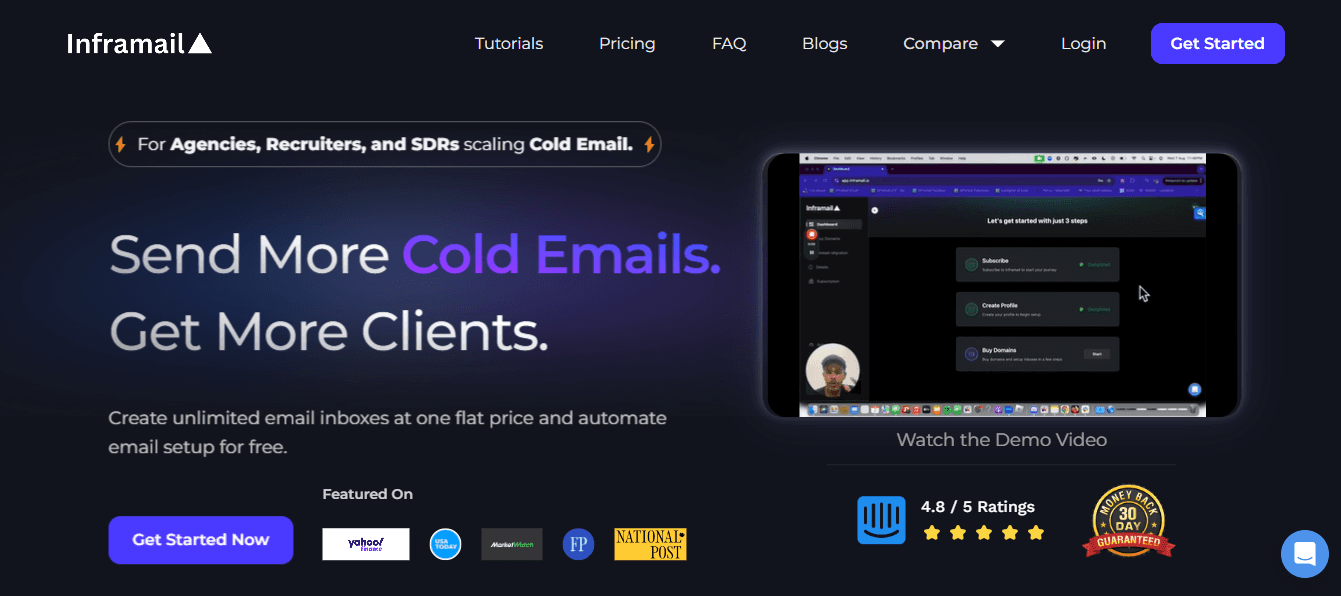
At Inframail, we are revolutionizing cold email infrastructure with unlimited inboxes at a flat rate.
We provide:
Microsoft-backed deliverability
Dedicated IP addresses
Automated technical setup
This helps customer outreach efforts efficiently like:
Agencies
Recruiters
SDRs
The main benefits of using our service:
Automated SPF, DKIM, and DMARC setup
Dedicated email servers for each user
16-hour priority support daily
Unlike traditional providers that charge per inbox and leave you wrestling with technical configurations, Inframail streamlines the entire process. We handle the complex infrastructure setup while you focus on reaching more prospects.
InfraMail provides the robust email infrastructure you need without the usual technical headaches and per-inbox costs, whether you're:
An agency looking to scale outreach
A recruiter connecting with candidates
An SDR driving sales
Start buying domains now and set up your email infrastructure today with our email infrastructure tool.

Google Postmaster (Free)

Gmail Postmaster is a free tool for monitoring email deliverability. It provides information about:
Your domain’s reputation
Spam rate
Authentication
When a sender sends a lot of spam, their mail will almost always be rejected or marked as spam due to their bad reputation. Gmail classifies senders’ reputations based on their history of sending spam into four categories:
Bad
Low
Medium/Fair
High
It lists the reasons for email failures, such as:
The rate limit exceeded the suspected spam
Spammy content
Unsupported attachments
DMARC rejection policy
Low IP/domain reputation
Listing in public blocklists
A list of IP address records that are sent is also provided. Google Postmaster helps you check the spam rate. Email spam rates are calculated by comparing the percentage of spam marked by users with the percentage of spam sent to the inbox of active users.
Postmaster is easy to use. Here are the steps:
Sign up for a Google Account if you haven’t already
Login to Postmaster
Tools In the bottom right corner, click “Add.”
Enter your authentication domain DKIM or SPF (We will discuss authentications in detail in the later part)
Continue by clicking “Next.”
Make sure your domain is verified.
Blacklist Detection Tool
Being blacklisted can stop you in a lot of places. Many things, including your domain reputation and email deliverability, will suffer poorly if your domain or IP address gets blacklisted. Hence, it is mandatory to remove any IP address or domain that gets blacklisted ASAP.
Some tools will help you identify why any particular domain of yours or the IP address you are using got blacklisted. Here is one such tool.
Spamhaus

Let’s see how Spamhaus can help you check email deliverability. Follow these steps to determine if your IP address is on the Spamhaus block list.
You can check your domain name or IP address at Spamhaus.
Spam Content Detection Tool
One of the most essential things to detect and monitor is the content of the email. Many things can go wrong with content, and ESPs actively detect spam or unwanted content to protect the user’s interests. I know it’s difficult to remember so many things while writing content, but some tools can guide you. Mail Tester is one such tool.
Mail Tester Tool
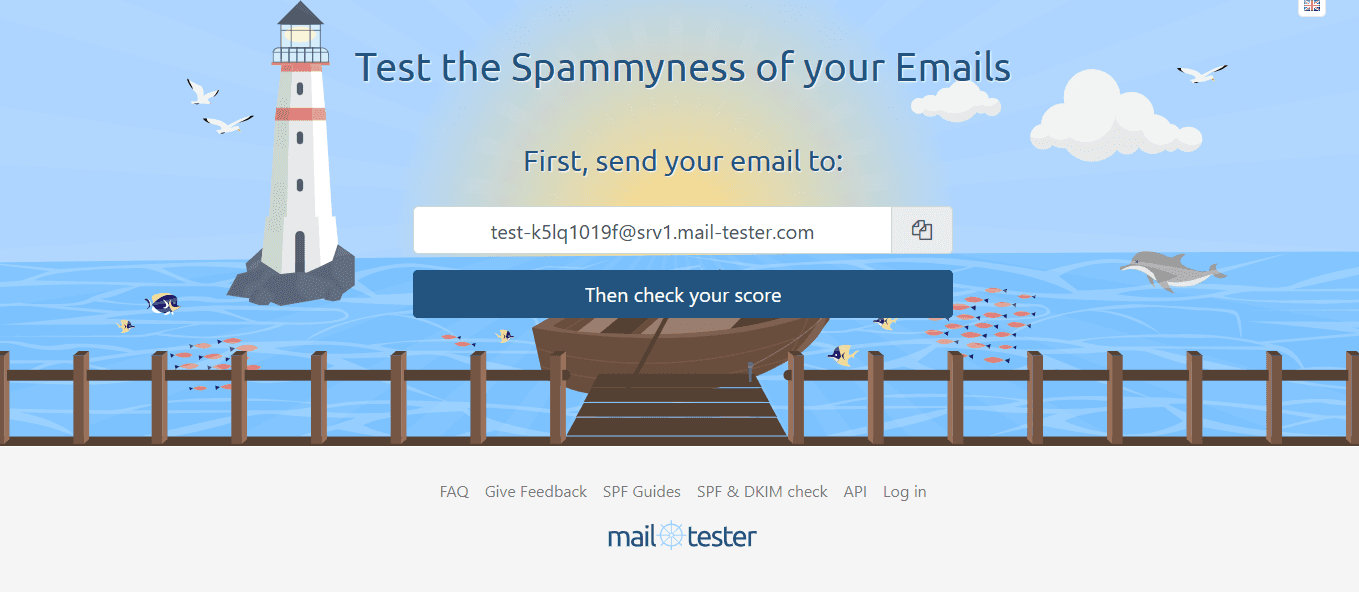
Let’s see how the Mail-tester Tool can help you check email deliverability. The Mail-tester tool is a free tool that lets you check your email content for potential spam triggers. Your email is scored based on how likely it is to be marked as spam by the tool.
Follow these steps to test your email content using Mail-Tester:
Create a new email in your email client.
To test the email, send it to an email address provided by Mail-Tester.
The Mail Tester will process your email after a few seconds.
Click “Refresh” on the Mail-Tester website.
After analyzing the content, Mail-Tester provides an email score based on various factors, including:
SPF and DKIM settings
Message headers
Content quality
Based on Mail-Tester’s score and recommendations, you may need to change your email content to improve your deliverability.
Seed Testing Tool
You can test the deliverability of your email campaigns using a seed testing tool by sending test emails to a set of “seed” addresses. A seed address is typically an email account belonging to a trusted third party. You can send test emails to the addresses collected from these seed testing tools and determine whether they get delivered to the inbox or land in the spam folder.
GlockApps
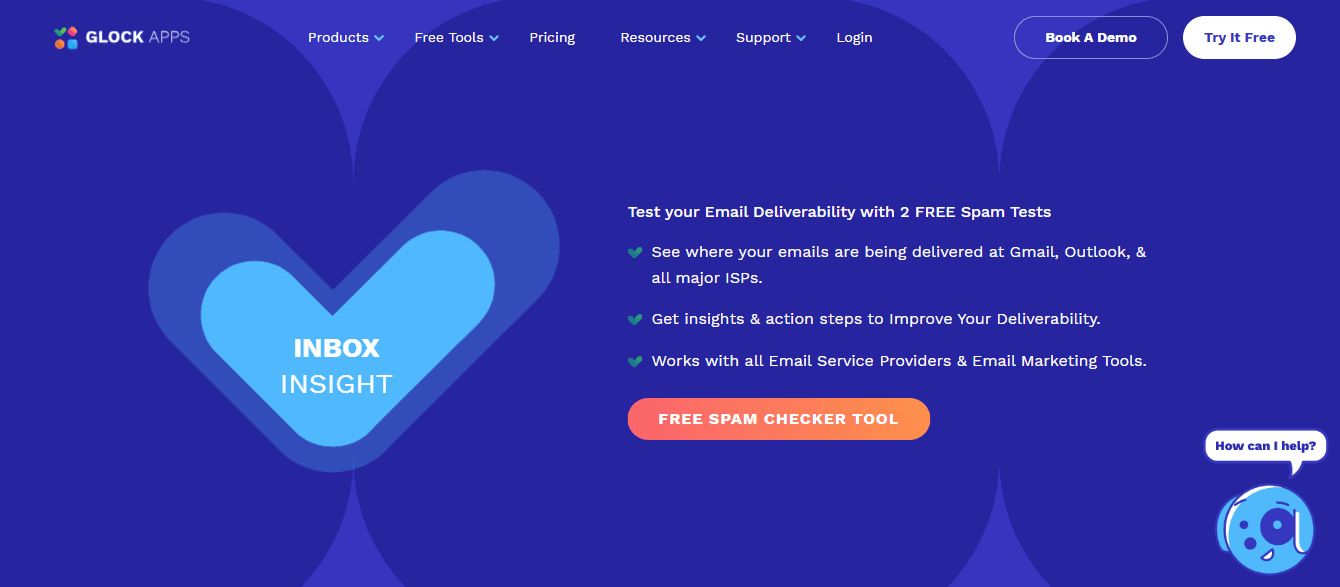
Let’s see how GlockApps can help you check email deliverability. You can test the deliverability of your emails across multiple email service providers using GlockApps.
GlockApps seed testing steps are as follows:
Log in to your GlockApps account.
At the top of the screen, click the “Email Tests” tab.
Start a new test by clicking the “New Test” button.
Send your email campaign by entering the subject line and sender address.
Please add your seed addresses to the seed list.
You can either enter them manually or upload them from a file.
Select the ESPs and email clients you want to test.
Launch the test and wait to see the results.
Reputation Monitoring Tools
Who doesn’t want to be reputed, right? So why not your emails? Okay, keeping jokes aside, maintaining the sender’s reputation intact is crucial, as a low reputation can also reduce the chances of your email being delivered. It’s tricky to do, but it’s possible. Here is a tool that can do it for you.
SenderScore
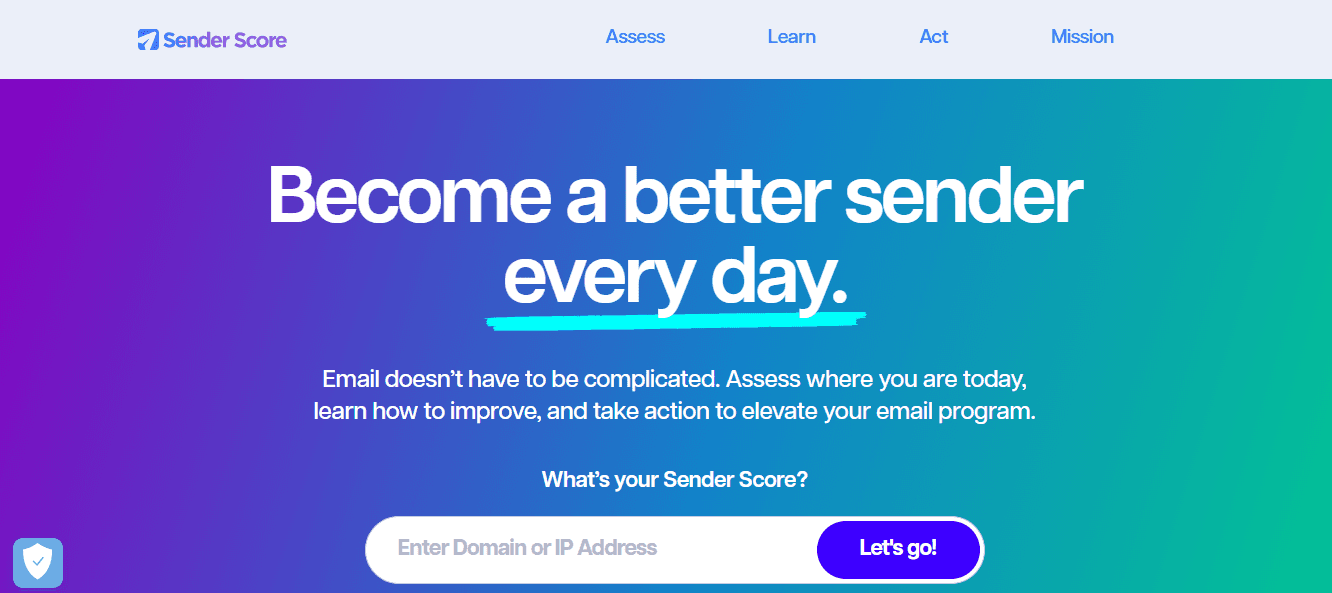
While Senederscore has many features, we will focus on its main feature: checking the sender’s reputation. This tool is not free to use—yep, that’s right!
There are simple steps to check this.
Log in to Senderscore via the web.
Enter your IP address or domain name in the search bar.
Click on view the partial report. And that’s it.
You will see your score. Note that without registration, you can only view a few details; if you want a complete view, you will have to register.
Start Buying Domains Now and Setup Your Email Infrastructure Today
At Inframail, we are revolutionizing cold email infrastructure with unlimited inboxes at a flat rate.
We provide:
Microsoft-backed deliverability
Dedicated IP addresses
Automated technical setup
This helps customer outreach efforts efficiently like:
Agencies
Recruiters
SDRs
The main benefits of using our service:
Automated SPF, DKIM, and DMARC setup
Dedicated email servers for each user
16-hour priority support daily
A Hassle-Free Email Infrastructure Solution
Unlike traditional providers that charge per inbox and leave you wrestling with technical configurations, Inframail streamlines the entire process. We handle the complex infrastructure setup while you focus on reaching more prospects.
InfraMail provides the robust email infrastructure you need without the usual technical headaches and per-inbox costs, whether you're:
An agency looking to scale outreach
A recruiter connecting with candidates
An SDR driving sales
Start buying domains now and set up your email infrastructure today with our email infrastructure tool.
Related Reading
• Sendgrid Alternatives
• Amazon SES Alternatives
• Mailgun Alternatives
• Maildoso Alternatives
• Mailreef
• Cold Email Marketing Services
• Cold Email Services
• Lemlist vs Instantly
• Smartlead vs Instantly


